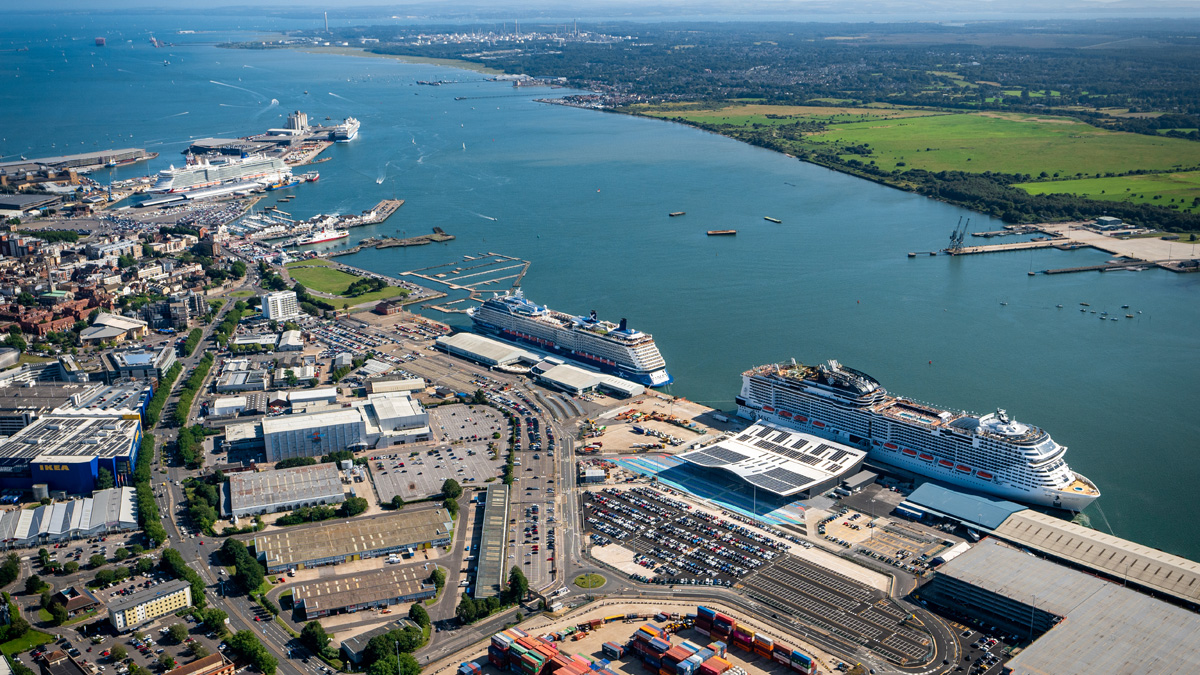“In transportation it's [a question of] do you hold the data to yourself? Or do you share it with your partners, so the whole supply chain can be optimised?," says Harm van Weezel, CIO at Associated British Ports.
ABP is owner and operator of 21 ports around the UK, which handle around a quarter of all shipping trade in the country. Appointed in 2019, van Weezel is in fact ABP’s first ever CIO, brought on board by chief exec Henrik L Pedersen to lead a major digital transformation project, starting with an SAP modernisation.
(ABP are implementing SAP HANA, Sycio Mobile and Fiori apps to deliver change that lands to over 2,000 employees, as well as to ABP’s customers and suppliers with an implementation by Sysdoc.)
The ports operator announced the latest phase of its efforts this week: a deal with Wärtsilä Voyage to implement its port-management systems, including Navi-Port, Navi-Harbour vessel traffic services, and its port management information system (PMIS). The five-year digitalisation project will cover all 21 of ABP’s ports, starting in Southampton in April 2023, then moving to other ports “as soon as possible” according to van Weezel.

“That's the journey we've gone on, to really improve the way we track our vessels in our statutory harbour authority area.
"And then we can [look at] how we share the information for the PMIS with all other parts of the operation, and really start to digitalise those aspects of [things that now happen on the phone],” he told The Stack.
“If you have access to high quality data, of course, you can make high-quality decisions that are fact-based. And also it's data you can share with all your stakeholders in the supply chain. Because if a vessel comes to our port, it's not just us dealing with it, there's many different stakeholders in that whole process of turning a vessel around, and serving our customers, and in the end their customers,” added van Weezel.
'Not just a system - it can't have any downtime'
While the PMIS will be a greenfield deployment, replacing ABP’s vessel tracking system will be a much bigger task, he said: “That's part of our key processes, and a part of that national critical infrastructure, we need to get that right. It's not just [one] system – there's an awful lot of sort of radar systems, VHF systems, all the other components that need to work, need to be integrated. Keeping a port running with so many vessel movements 24/7 and trying to replace something which is highly critical to the operation, that can't really have any downtime – it needs some careful planning” -- in the longer term, the aim will be to integrate the new Wärtsilä systems with ABP’s SAP implementation, but the immediate priority is to get them up and running on their own.
“Over time, we say, okay, how do we integrate it with our terminal operating systems, with our financial systems behind it, etc. etc.? And how can we make sure the whole process is as efficient as possible? And how can we start sharing data with our customers, and all the other stakeholders in the port that need to be involved in that end to end port call?” explains van Weezel.
Being able to share real-time data more easily will be one of the big wins of the digitalisation project, with significant benefits for all involved in the supply chain. ABP Southampton saw 10 cruise ships arrive and depart, bringing 50,000 passengers – along with cargo vessels loading and unloading cars, and the vast DP World container operation, which continues to be under significant stress, all in the first weekend of the month.
“If we know that one of our vessels is delayed, for whatever reason – could be weather, could be operations – and we tell that vessel to slow down a little, that data is readily available and can be shared across the many different stakeholders in the whole end-to-end supply chain,” he explained.
Associated British Ports CIO: "We need to be mindful of the role that the port can play in the whole end-to-end supply chain"
“They can conserve fuel, but they can arrive just in time. So it's safer for them at a lower cost, and more efficient for us. So everybody, that whole supply chain benefits from having that quality of data at their fingertips. So that's a great example where it helps from a customer satisfaction point of view, a sustainability point of view and cost benefit point of view, port efficiency point of view.
There will also be direct returns for other stakeholders: “We don't benefit from having loads of trucks waiting in a port, neither do the transportation companies in this day and age. So we just need to be mindful of the role that the port can play in the whole end to end supply chain. And we are mindful, of course, but ever more so by sharing data.”
ABP’s Southampton operations are used to being the first to trial new technology – van Weezel noted the port saw a deployment of one of the first private 5G networks in the UK in 2021. The port also has the advantage of a simpler infrastructure, without the complex system of locks, and inner and outer berths, which are in use at Humber.
“Humber, we're not sure yet whether to completely replace the vessel tracking system. So that's not agreed yet. But we will do the PMIS. It depends on how the integration goes, and how complicated it is, and landing our designs,” said van Weezel.
Follow The Stack on LinkedIn
“It's a great challenge. We've done all of our 2B processes, we've done our Future Ways of Working Designs, as we call them. And we're now in the phase of detailed designs. And that's where the team from Wärtsilä are helping us to bring that to life, working really closely with our marine teams.”
When it comes to where the new systems will run, the ABP CIO said this won’t be a task solely for the hyperscalers yet: “Some of it will be on prem, some of it will be in the cloud. So it's a bit of a mix. It would be very brave to put our vessel tracking system in the cloud completely. There's a lot of components that it simply wouldn't make any sense to stick in the cloud, because they just need to be close to where the data originates from.”
Beyond latency, the other major issue facing ABP’s operations – along with almost every other logistics company in the world – is security. Here van Weezel is pragmatic, noting that ABP doesn’t refer to cyber-security, but “digital safety” in order to make it “understandable for everybody”.
“In parallel to our digitalisation, we've got a huge programme going on to improve our cyber posture in our defences, because that's an area we can never stand still. I think it was recently on the BBC I read that the Port of Los Angeles gets 1000s of attacks every month, every day. Many companies in our space are no different."
See also: EU terminals, oil storage hit by cyber attacks. Industry “caught napping”
Van Weezel is also clear about the potential for “known unknowns”, as Donald Rumsfeld put it: “You need to be aware that there are things that we don't know about now. And therefore, you need to be ready to respond to an incident where you need to recover. So you can have the best defences in the world. There'll be physical defences – but an attack, a terrorist attack or anything else could still happen.
“Likewise, a ransomware attack, or cyber-attack can still happen. Because there's vulnerabilities that you and I don't know about at this point in time, neither do our partners from Microsoft, or any other, for that matter. And with more and more equipment being connected, it becomes more and more important to always be on your guard.”









